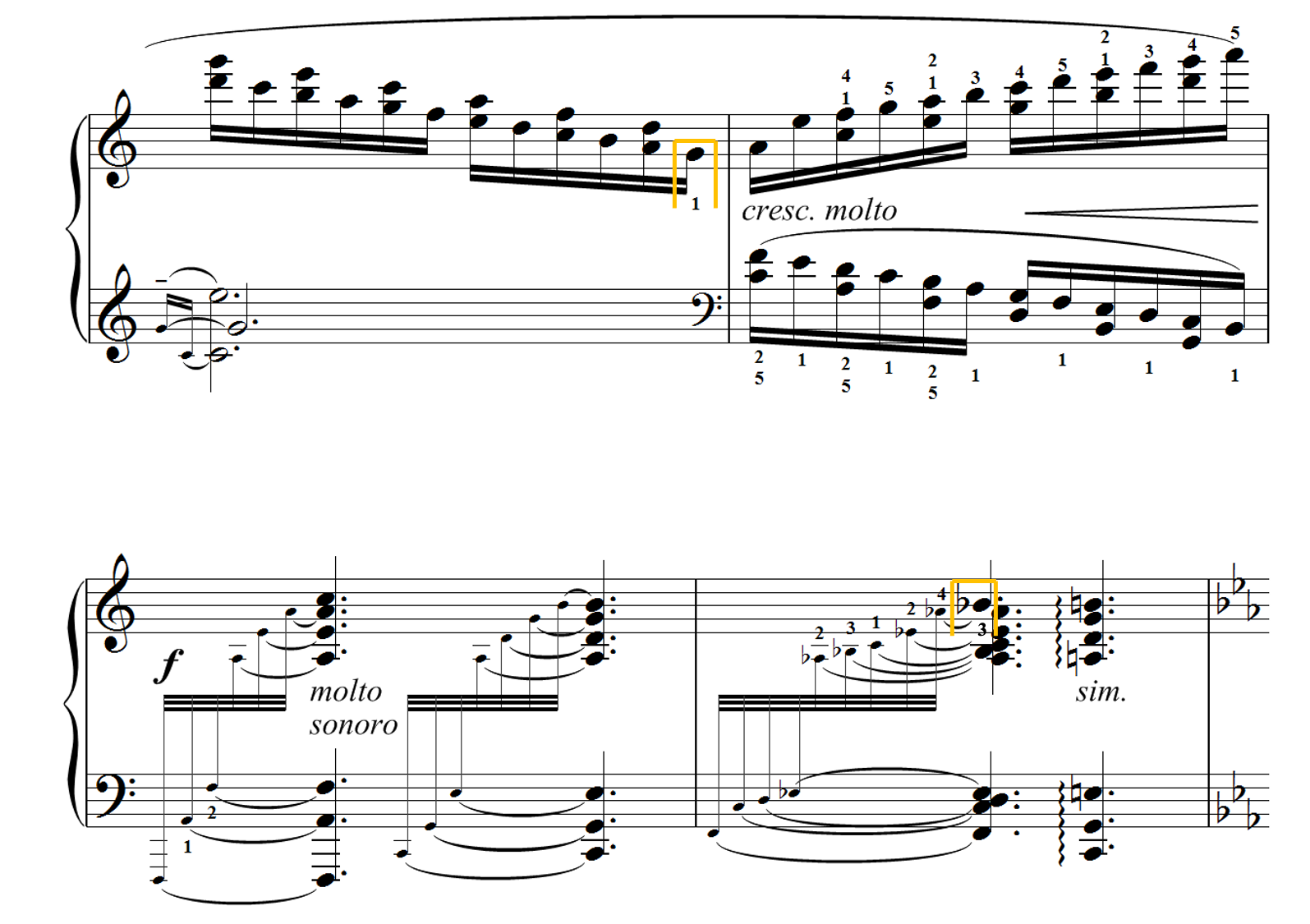“I find it easier to keep the LH within an octave where possible. The leap to 1 on a black can also be uncomfortable.”
Submitted by Michael Clark
Published on 3/16/2020

“I find it easier to keep the LH within an octave where possible. The leap to 1 on a black can also be uncomfortable.”
Submitted by Michael Clark
Published on 3/16/2020

“This redistribution allows the middle voice to remain legato while the articulation in the top voice is observed.”
Submitted by Michael Clark
Published on 3/16/2020

“Switching the sixteenth notes to the left hand one note earlier allows the fingering patterns to flow more naturally in both hands. The suggested fingering for the grace notes in m. 31 uses stronger fingers to achieve the ‘molto sonoro’ forte tone Barber desires.”
Submitted by Michael Clark
Published on 3/18/2020

“Splitting between hands like this allows the rolled notes to played much more fluidly and in a faster motion.”
Submitted by Wade Troyer
Published on 9/1/2023

“The hand crossing allows you to play pianissimo much easier than try to playing the 2nds as written with one hand.”
Submitted by Wade Troyer
Published on 9/12/2023

“Switching the C to the left hand allows for a more evenly divided roll and requires the right hand to move less from its previous position.”
Submitted by Michael Clark
Published on 3/18/2020

LH = blue
RH = red
“The redistribution of notes allows the downbeat to played easier in measure 15, though this takes away the ‘struggle’ or forced broadening that Barber intended. That can still come across though with this restructuring.”
Submitted by Wade Troyer
Published on 9/1/2023

“Taking the E with the left hand helps me get the fingers I want on the sixth in the next measure less clumsily. I pedal along with the melody line.”
Submitted by Michael Clark
Published on 3/16/2020

“This leap is easier as just a tenth with the left hand taking the E-flat.”
Submitted by Michael Clark
Published on 3/16/2020

“Taking the F in the right hand allows the bass to sustain while I pedal with the right-hand line.”
Submitted by Michael Clark
Published on 3/16/2020

“The top notes of some of the large chords in the left hand are within reach of the right-hand thumb, eliminating the needs for rolls on those chords.”
Submitted by Michael Clark
Published on 3/16/2020

“The right-hand thumb is already playing E-sharp, so there’s no need to stretch with the left hand or let go of the bass notes. With this fingering, I can change the pedal on the final chord without losing the bass.”
Submitted by Michael Clark
Published on 3/16/2020

“Letting the left hand help with the lower note on the treble staff helps reduce the number of position shifts in the right hand.”
Submitted by Michael Clark
Published on 3/17/2020

“Letting the left hand help with the lower note on the treble staff helps reduce the number of position shifts in the right hand.”
Submitted by Michael Clark
Published on 3/17/2020

“Letting the left hand help with the lower note on the treble staff reduces the number of position shifts in the right hand.”
Submitted by Michael Clark
Published on 3/17/2020

“Letting the left hand help with the lower note on the treble staff helps reduce the number of position shifts in the right hand.”
Submitted by Michael Clark
Published on 3/17/2020

Submitted by Jun Guo
Published on 5/14/2020

Submitted by Jun Guo
Published on 5/14/2020